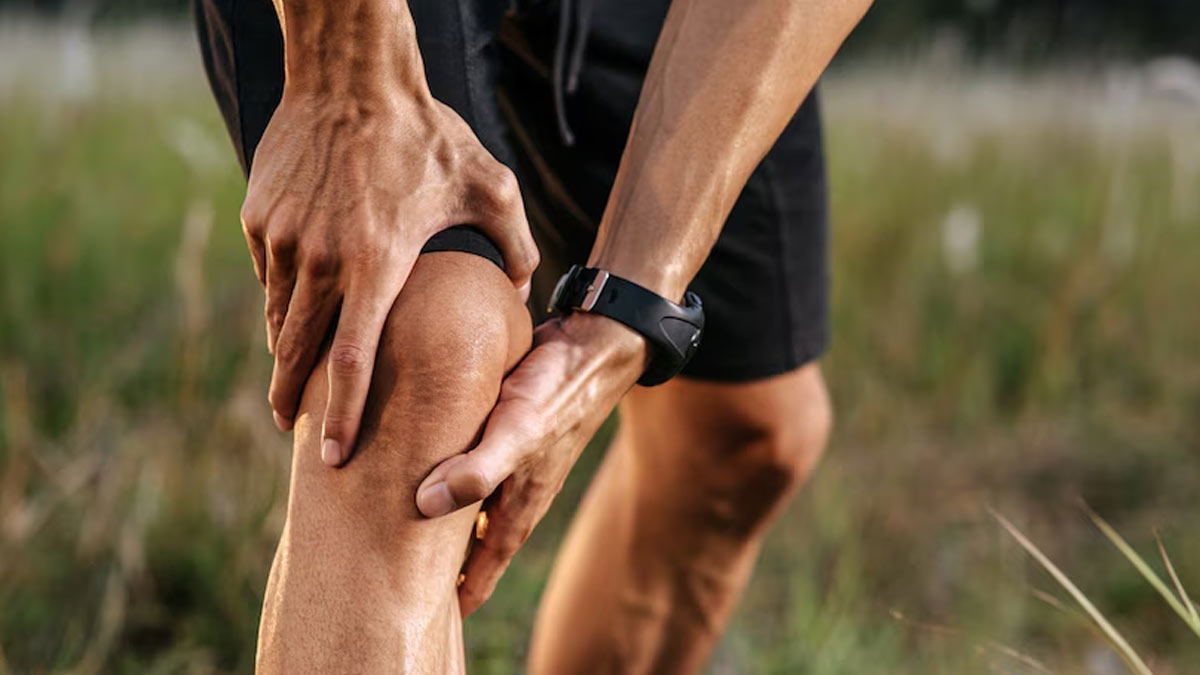
Knee issues are common, whether due to injury, arthritis, or simply wear and tear over time. A common problem many people face is the accumulation of fluid in the knee joint, often called "water on the knee" or knee effusion. This can lead to swelling, stiffness, and discomfort, making everyday activities challenging. While severe cases require medical intervention, there are home remedies that can help regulate fluid in your knees and provide relief. Here are some effective strategies you can try.
Table of Content:-
1. Rest and Elevation
One of the simplest ways to reduce knee swelling is to rest your leg and elevate it. Resting prevents further strain on the joint, allowing inflammation to subside. Elevate your knee above the level of your heart using pillows to reduce fluid buildup. This helps reduce pressure in the area, facilitating the drainage of excess fluid.
2. Cold Compresses

Applying a cold compress to your knee can help reduce swelling and numb the pain. Cold therapy constricts blood vessels, reducing blood flow to the area and minimizing inflammation. Use an ice pack wrapped in a towel and apply it to the affected knee for 15-20 minutes every 2-3 hours. Avoid placing ice directly on the skin to prevent frostbite.
Also read: What To Expect When You Have A Knee Arthritis
3. Compression Bandages
Compression bandages, like elastic knee wraps, can provide support to your knee and reduce fluid accumulation. The gentle pressure from the wrap can help limit swelling and support the joint during movement. Be careful not to wrap too tightly, as it could impede blood flow and cause further discomfort.
4. Stay Hydrated
It may seem counterintuitive, but staying hydrated can help regulate the fluid in your body, including your knees. Dehydration can cause your body to retain more fluids, leading to swelling. Drinking adequate water helps flush out excess salt and toxins that contribute to fluid retention. Aim for 8-10 glasses of water daily to keep your joints happy and healthy.

5. Anti-Inflammatory Foods
Incorporate anti-inflammatory foods into your diet to help reduce swelling in the knees. Foods rich in omega-3 fatty acids, such as salmon, walnuts, and flaxseeds, have natural anti-inflammatory properties. Turmeric, ginger, and garlic are also known for their anti-inflammatory effects. Adding these to your meals can aid in reducing overall inflammation in your body, including your knees.
Also read: Winter Pre & Post-Op Care: Essential Precautions for Knee Surgery
6. Epsom Salt Soaks
Epsom salt, rich in magnesium, can help relax muscles and reduce swelling when dissolved in warm water. You can soak a towel in a solution of warm water and Epsom salt and apply it to the affected knee. Alternatively, if you have access to a bathtub, a full soak can be quite soothing. Do this for 15-20 minutes to help alleviate discomfort.
7. Gentle Exercise and Stretches
Light exercise can be beneficial for knee health by promoting blood circulation and preventing stiffness. Low-impact exercises like swimming, cycling, or simple stretches can help keep the joint fluid moving. Try gentle knee bends, hamstring stretches, or seated leg raises to strengthen the muscles around the knee and reduce fluid buildup.
8. Apple Cider Vinegar
Apple cider vinegar is a popular home remedy known for its anti-inflammatory properties. It may help in flushing out excess fluids and toxins from the knee joint. Mix a tablespoon of apple cider vinegar with warm water and drink it once daily. Alternatively, you can dilute it and apply it as a compress to the swollen area.
9. Massage Therapy

A gentle massage around the knee area can help stimulate blood flow and lymphatic drainage, reducing fluid accumulation. Use light, circular motions around the knee, avoiding direct pressure on the swollen area. You can use essential oils like lavender or eucalyptus mixed with a carrier oil to enhance the soothing effect of the massage.
When to See a Doctor
While these home remedies can provide relief, it's essential to monitor your symptoms. If you experience severe pain, an inability to bear weight on the knee, or if the swelling doesn’t subside after a few days of home care, it’s time to consult a healthcare professional. They may recommend further evaluation, medications, or physical therapy to address the underlying issue.
Conclusion
Fluid accumulation in the knees can be uncomfortable, but with these simple home remedies, you can manage the symptoms and find relief. A combination of rest, proper hydration, a balanced diet, and gentle exercise can work wonders for maintaining knee health. However, always listen to your body and seek medical advice if needed. Your knees deserve the best care, so treat them kindly!
Also watch this video
How we keep this article up to date:
We work with experts and keep a close eye on the latest in health and wellness. Whenever there is a new research or helpful information, we update our articles with accurate and useful advice.
Current Version